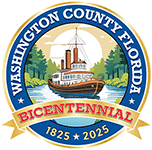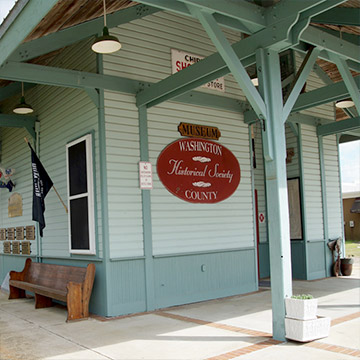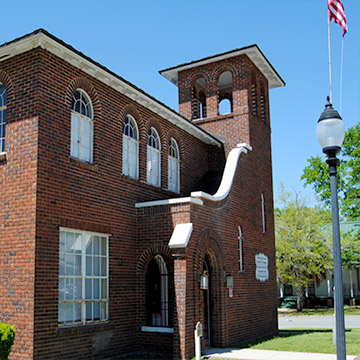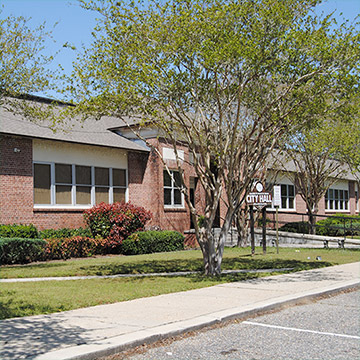Caryville, Florida
-
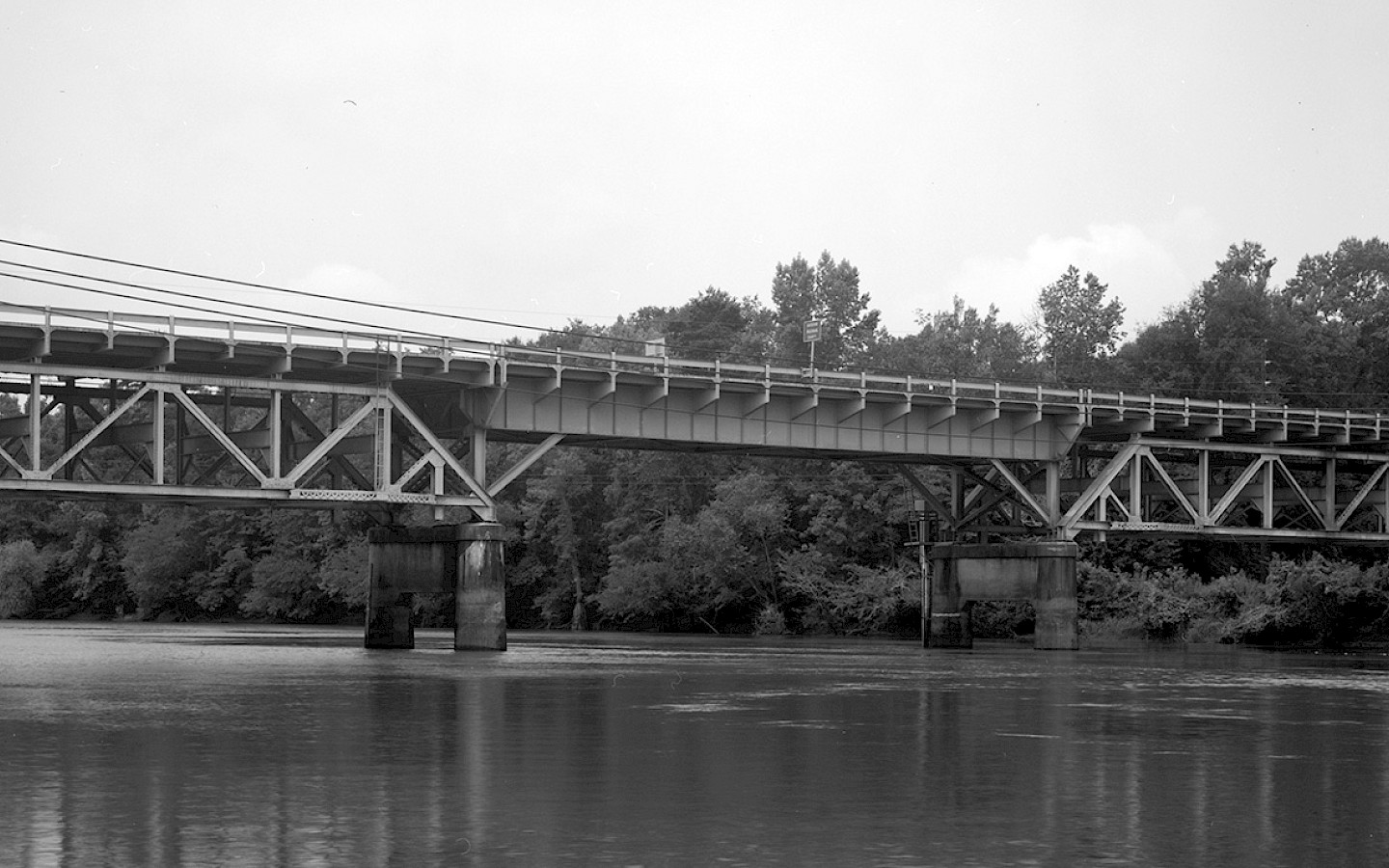
A black and white photo of a train tracks over the Choctawhatchee River, in Caryville. The tracks connect Washington and Holmes County, and across the panhandle of Florida from Pensacola to Jacksonville.
-
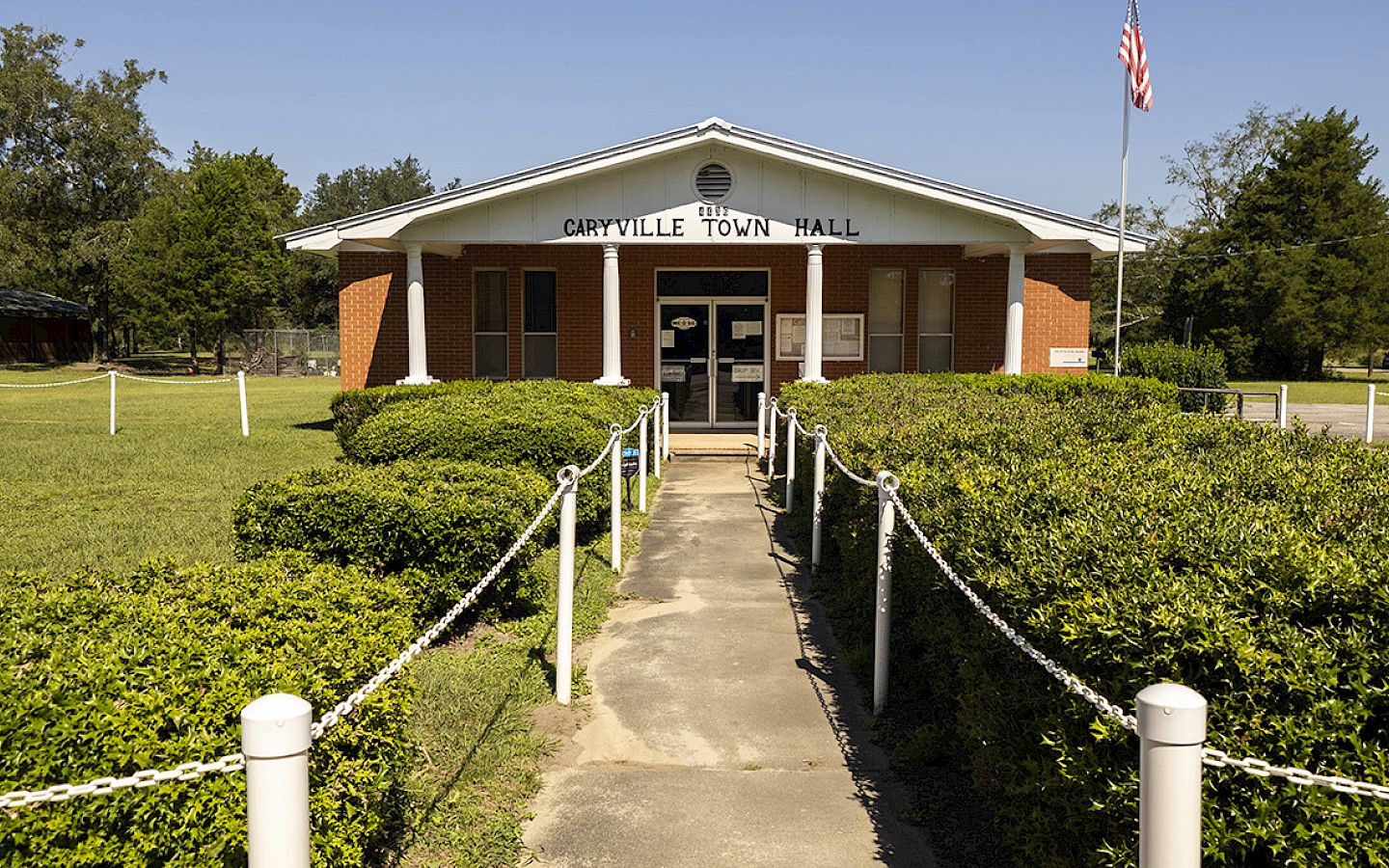
The current Town Hall of Carryville, Florida, sits just a half-mile from the Choctawhatchee River.
History of Caryville, Florida
Source: Washington County Historical Society
Originally called Half Moon Bluff , Caryville was established as a saw- mill community around 1882 as the Pensacola & Atlantic Railroad (later the L&N) was completed across the Choctawhatchee River. The community quickly became a construction camp for the railroad’s development. The workers used the bluff as an operation base, with materi- als transported up the Choctawhatchee River from Pensacola on steamboats. The town was named after the railroad executive R.M. Cary. The town grew to become a major industrial center, noted for its sawmills that used the river and its tributaries as transportation routes to bring timber downstream from adjoining Holmes County as well as nearby areas of Alabama. At its peak, Caryville was the largest sawmill community in the nation. In 1900, one of the largest timber and mill companies, Sanford Lumber Company, began operations.
By 1904, construction of a rail line connecting the company with Godwin’s Turpentine Still to the southeast was underway. This route was one of the original logging routes before the introduction of the railroad when logs fl oated down the Choctawhatchee River. The mill had the capacity to produce 100,000 board feet of lumber per day and employed around 400 laborers. The mill was sold several times by 1925 and had acquired approximately 125,000 acres of land as the Henderson-Waits Lumber Company. The Great Depression forced a halt in operations until around 1933 when the mill opened back up at half- capacity. Operations ceased around the late 1930s due to exhausting the timber resources, the eff ects of the Economic Depression and federal regulation. The last of the sawmills was dismantled and gone by World War II.
In 1903, as a sign of early prosperity, Caryville became the first community in Washington County to receive electric power and was incorporated ten years later in 1913. A major boom was forecast when the Old Spanish Trail (today’s U.S. 90) bridged the Choctawhatchee in 1925, thus ceasing the ferry service. The original Caryville Bridge was designed and fabricated by the Pensacola Shipbuilding Company, which was a principal bridge builder in the state, and one of the few surviving bridges in the state constructed by the Pensacola Shipbuilding Company.
Optimism sank when devastating floods swamped the community in 1928 and 1929. The flood of 1929 proved to be the most destructive with the Choctawhatchee River cresting an astounding 15 feet above damage stage forcing a steamboat into a cornfield and a frog infestation. “It must of rained frogs ‘cuz Chipley was on the hop,” recalled a resident. The completion of I-10 and subsequent floods in the late 20th century caused more devastation for the town, forcing nearly all of Caryville to pick up and move to higher ground.
